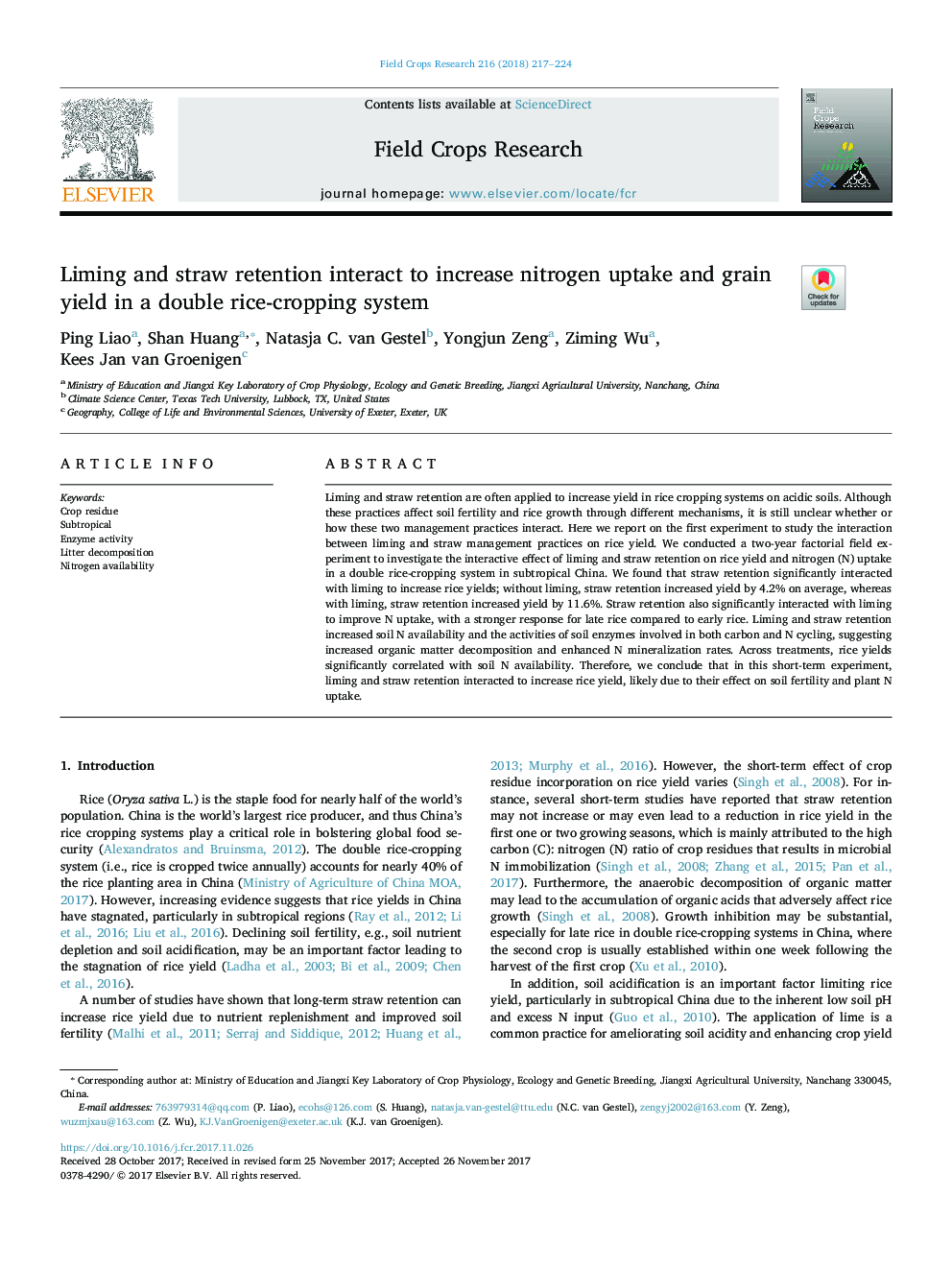| کد مقاله | کد نشریه | سال انتشار | مقاله انگلیسی | نسخه تمام متن |
|---|---|---|---|---|
| 8879446 | 1624647 | 2018 | 8 صفحه PDF | دانلود رایگان |
عنوان انگلیسی مقاله ISI
Liming and straw retention interact to increase nitrogen uptake and grain yield in a double rice-cropping system
ترجمه فارسی عنوان
غلظت و نگهداری کاهو برای افزایش جذب نیتروژن و عملکرد دانه در یک سیستم برنج دوبار تعامل می
دانلود مقاله + سفارش ترجمه
دانلود مقاله ISI انگلیسی
رایگان برای ایرانیان
کلمات کلیدی
بقایای محصول، ساتروپیک، فعالیت آنزیم، تجزیه پودر، در دسترس بودن نیتروژن،
موضوعات مرتبط
علوم زیستی و بیوفناوری
علوم کشاورزی و بیولوژیک
علوم زراعت و اصلاح نباتات
چکیده انگلیسی
Liming and straw retention are often applied to increase yield in rice cropping systems on acidic soils. Although these practices affect soil fertility and rice growth through different mechanisms, it is still unclear whether or how these two management practices interact. Here we report on the first experiment to study the interaction between liming and straw management practices on rice yield. We conducted a two-year factorial field experiment to investigate the interactive effect of liming and straw retention on rice yield and nitrogen (N) uptake in a double rice-cropping system in subtropical China. We found that straw retention significantly interacted with liming to increase rice yields; without liming, straw retention increased yield by 4.2% on average, whereas with liming, straw retention increased yield by 11.6%. Straw retention also significantly interacted with liming to improve N uptake, with a stronger response for late rice compared to early rice. Liming and straw retention increased soil N availability and the activities of soil enzymes involved in both carbon and N cycling, suggesting increased organic matter decomposition and enhanced N mineralization rates. Across treatments, rice yields significantly correlated with soil N availability. Therefore, we conclude that in this short-term experiment, liming and straw retention interacted to increase rice yield, likely due to their effect on soil fertility and plant N uptake.
ناشر
Database: Elsevier - ScienceDirect (ساینس دایرکت)
Journal: Field Crops Research - Volume 216, February 2018, Pages 217-224
Journal: Field Crops Research - Volume 216, February 2018, Pages 217-224
نویسندگان
Ping Liao, Shan Huang, Natasja C. van Gestel, Yongjun Zeng, Ziming Wu, Kees Jan van Groenigen,
